By Robert Bernstein
This is the last weekend for the traveling exhibit: King Tut: Treasures of the Golden Pharoah. At the California Science Center in Los Angeles. After this one stop in the US, the exhibit travels to Europe.
We were in Los Angeles for the Rose Parade and were very fortunate to get to see this King Tut exhibit as well.
Here are all of my photos!
I have been to several other King Tut exhibits in my life, including one at the British Museum when I was a teen. Back then the boy king and his coffin were on display, but they no longer travel outside
Egypt. Here I posed with a photo of that iconic coffin
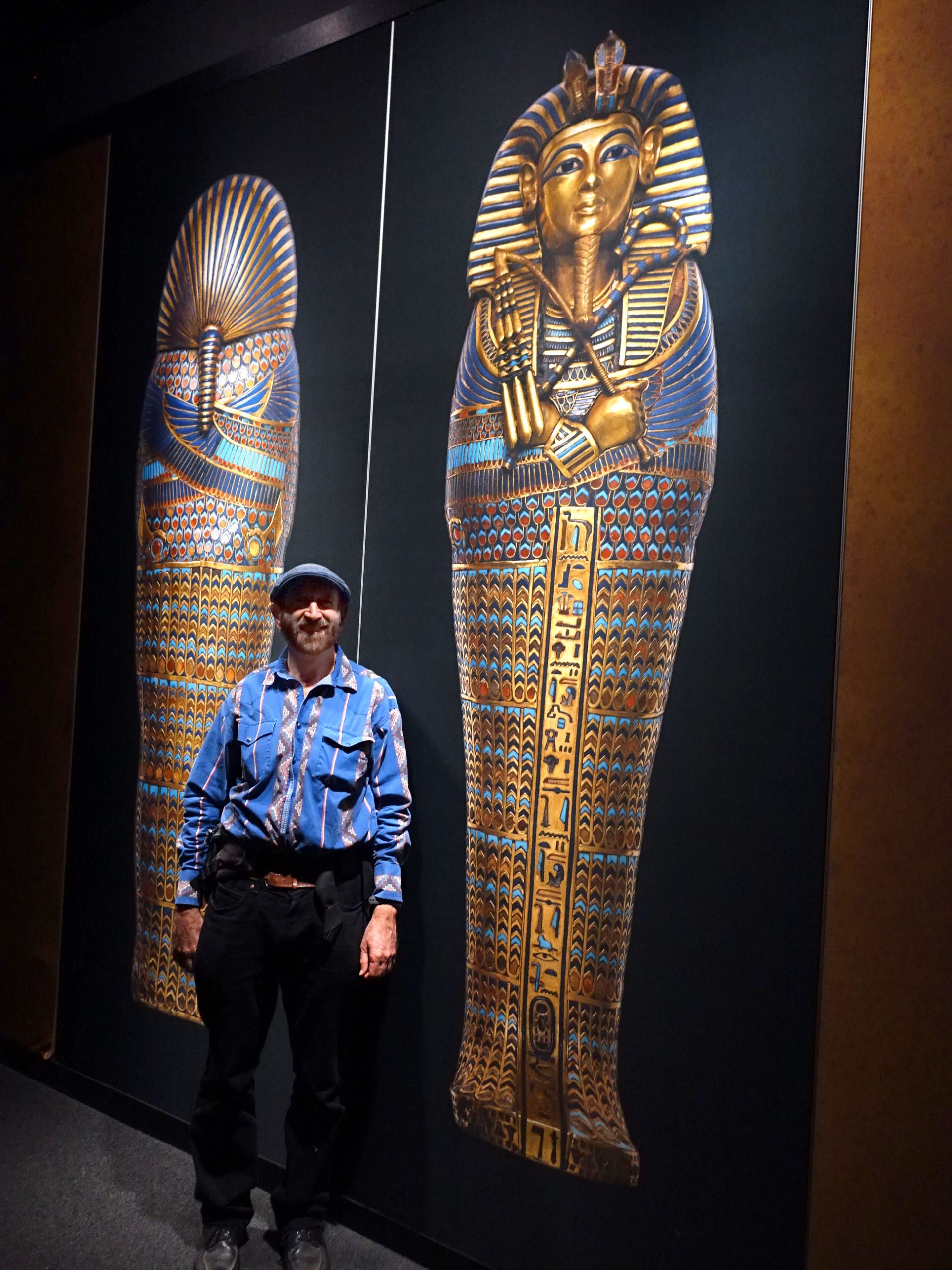
However, this was the first exhibit I attended where photos were allowed. And there were over 150 priceless artifacts on display, all from his tomb!
The exhibit starts with an explanation of how extraordinary it was to find the tomb at all. Earlier pharaohs built massive pyramids to draw attention to themselves. That did not turn out well. Yes, they were remembered. But it was also an invitation to grave robbers to steal most of the treasures inside.
King Tut had a much better plan. He was buried in the Valley of the Kings in a completely unmarked tomb underground. In modern times, no one knew of this place. In fact, esteemed archaeologist Giovanni Belzoni declared, “It is my firm opinion that in the Valley… there are no more tombs than are now known.”
But 17 year old Howard Carter arrived in Egypt in 1891, which began his career collecting antiquities there. He was fortunate to stay in Egypt as his mentor Flinders Petrie said he did not have what it took to become an archaeologist. Carter was seen as more of an art historian than an actual excavator.
American Egyptologist Theodore Davis found a cup with the name Tutankhamun in 1905. Davis thought he had found King Tut’s tomb. But Carter thought the actual tomb of King Tut was yet to be found.
Carter went on to receive financial support from Lord Carnarvon in 1914 to dig in the Valley of the Kings in search of that tomb. It was a longshot in many ways. After a long interruption due to WWI, Carter spent five years in that search. From 1917 to 1922. He found nothing of the tomb and Carnarvon warned him he would have just one more season to try before cutting off funding.
Just a few days into that last season, Egyptian water carrier Hussein Abdel-Rassoul accidentally found the top step into the tomb while digging to place his water jar. Here Carter had the boy photographed later with one of the treasures of the tomb (and there is an inset of him as an old man)
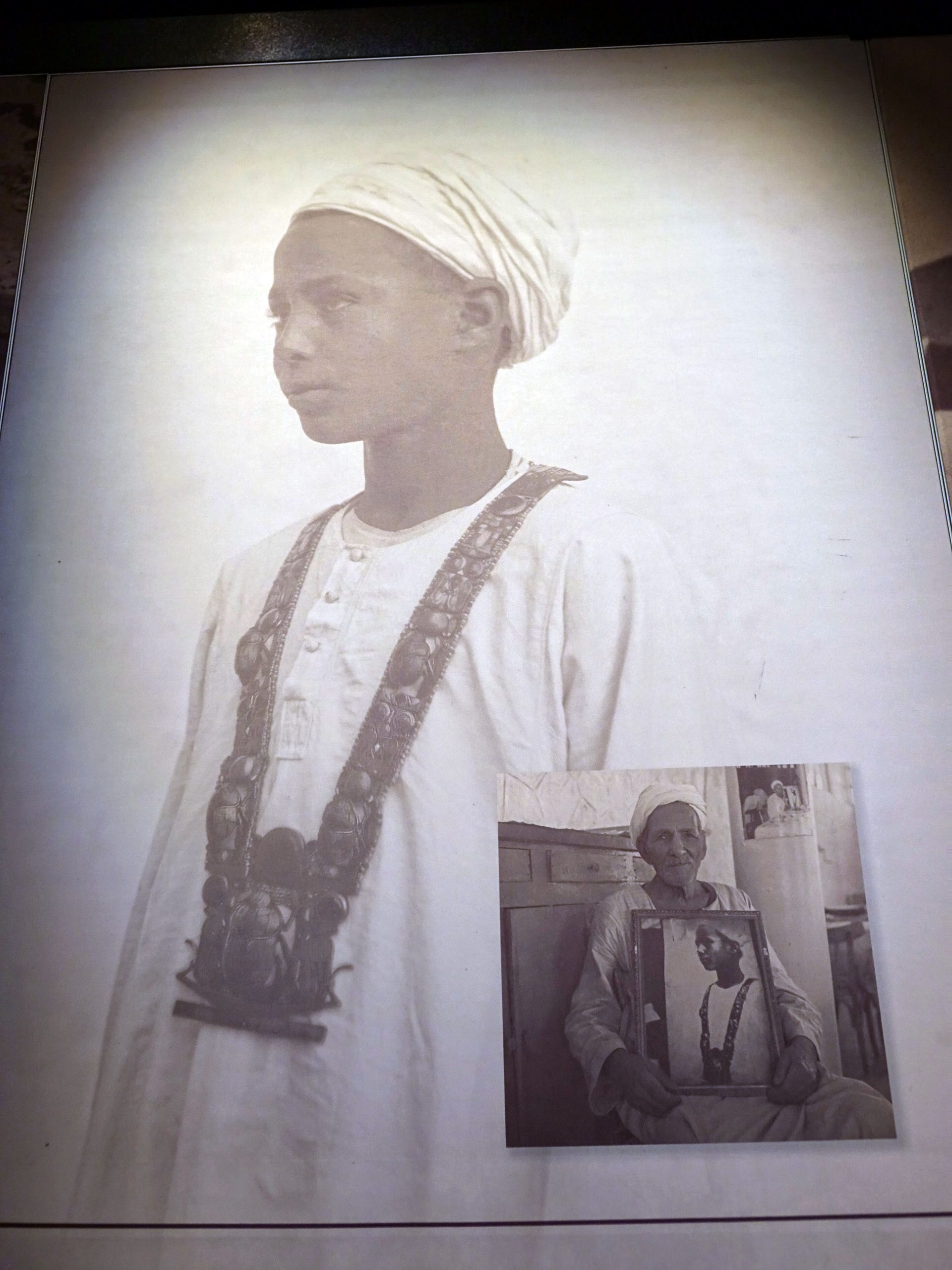
As Carter had theorized, the tomb was completely undiscovered and intact. It is unique for showing how the Egyptian kings were buried as they originally had been laid to rest with their treasures.
The exhibit explains the Egyptian philosophy of life and death that led them to believe in life in the hereafter. Much of Egyptian life was devoted to preparation for the hereafter. Each person would have
to find his or her own unique path to that afterlife.
In the case of King Tut, he was provided with boats to make part of the journey, just as he had used in life
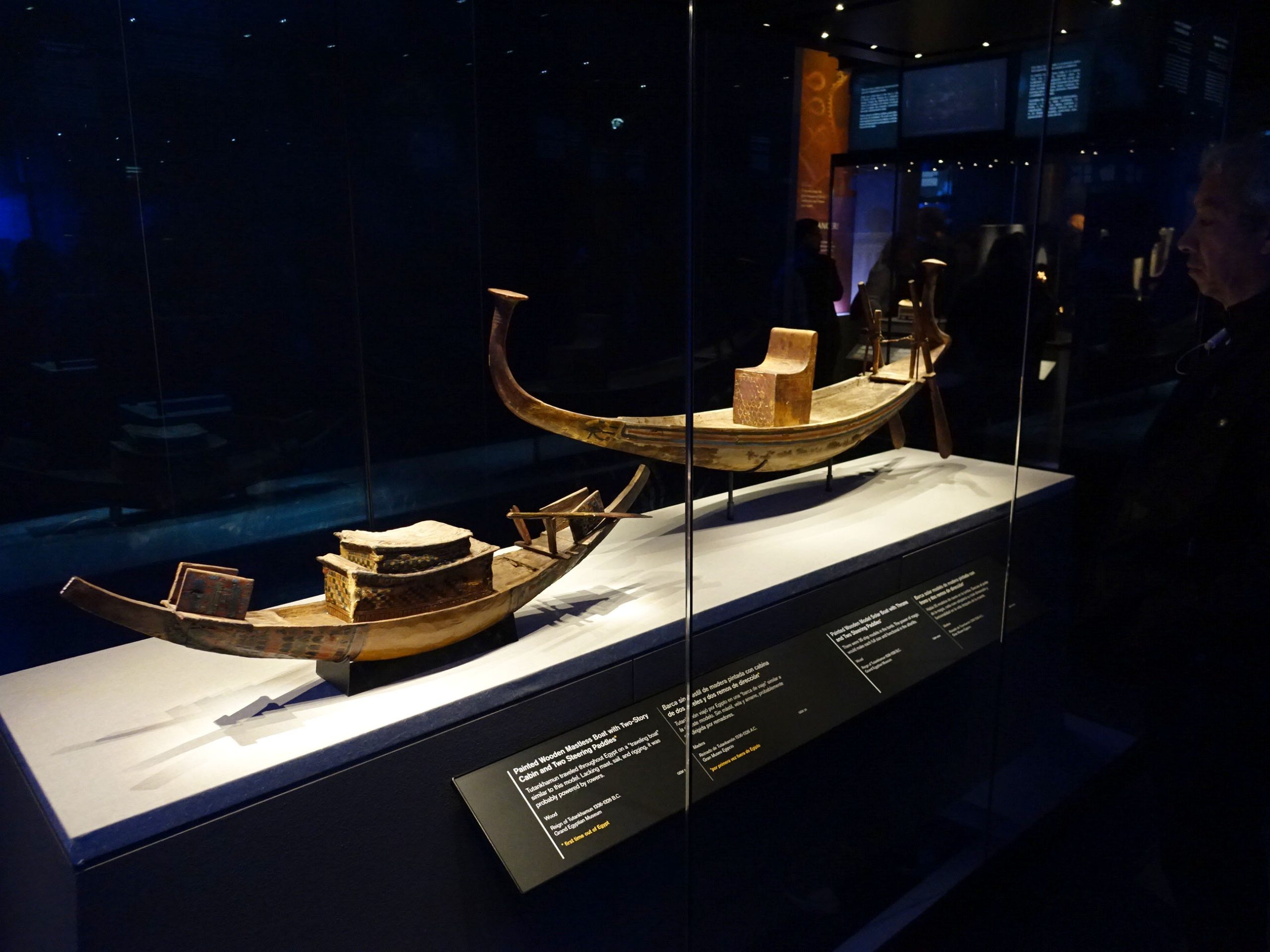
Here was a game he would play in the afterlife. The game is called “passing” which symbolized his passing in the Netherworld. Winning symbolized successful entry.
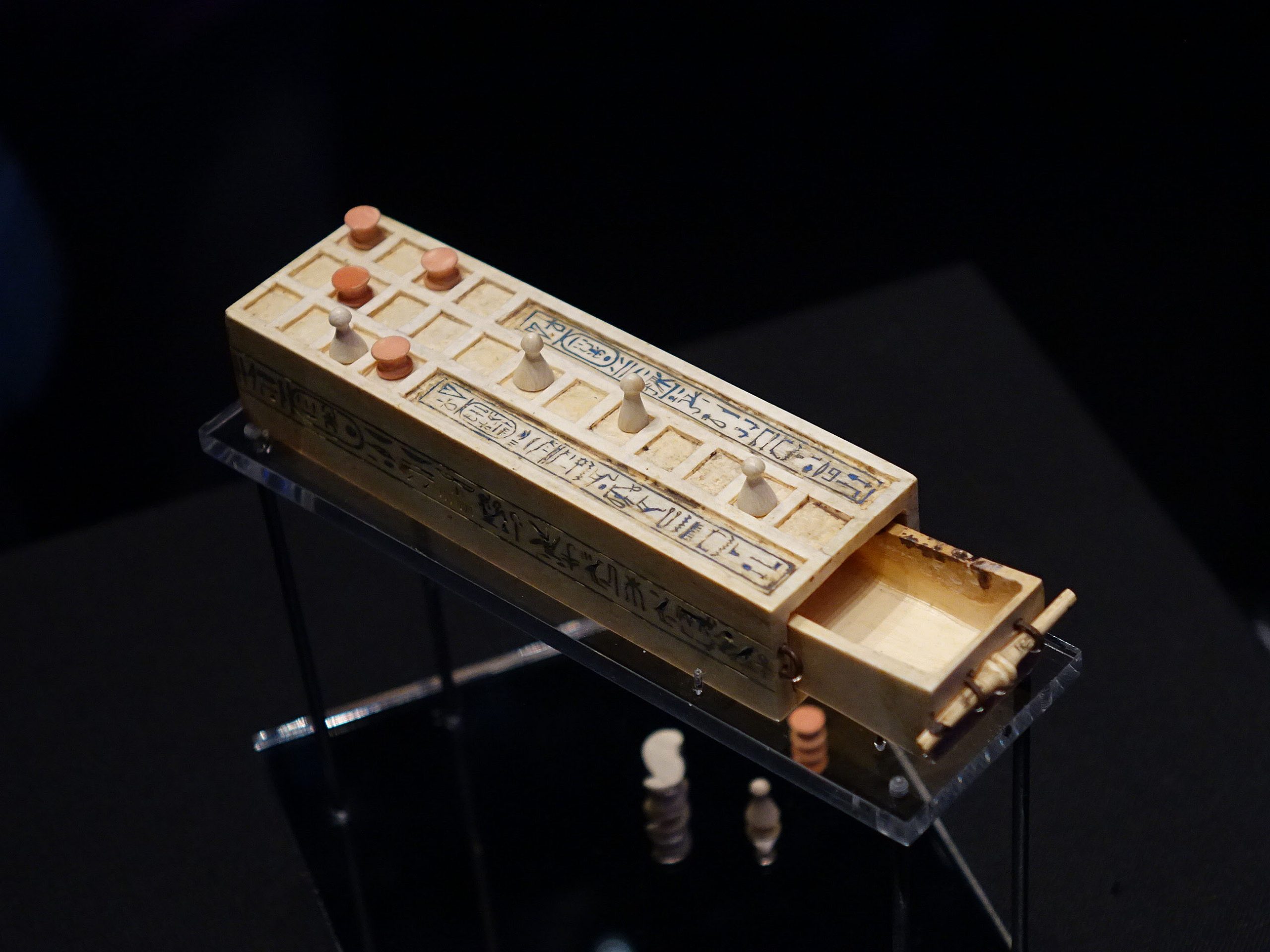
Of course in the afterlife King Tut would want a comfortable chair
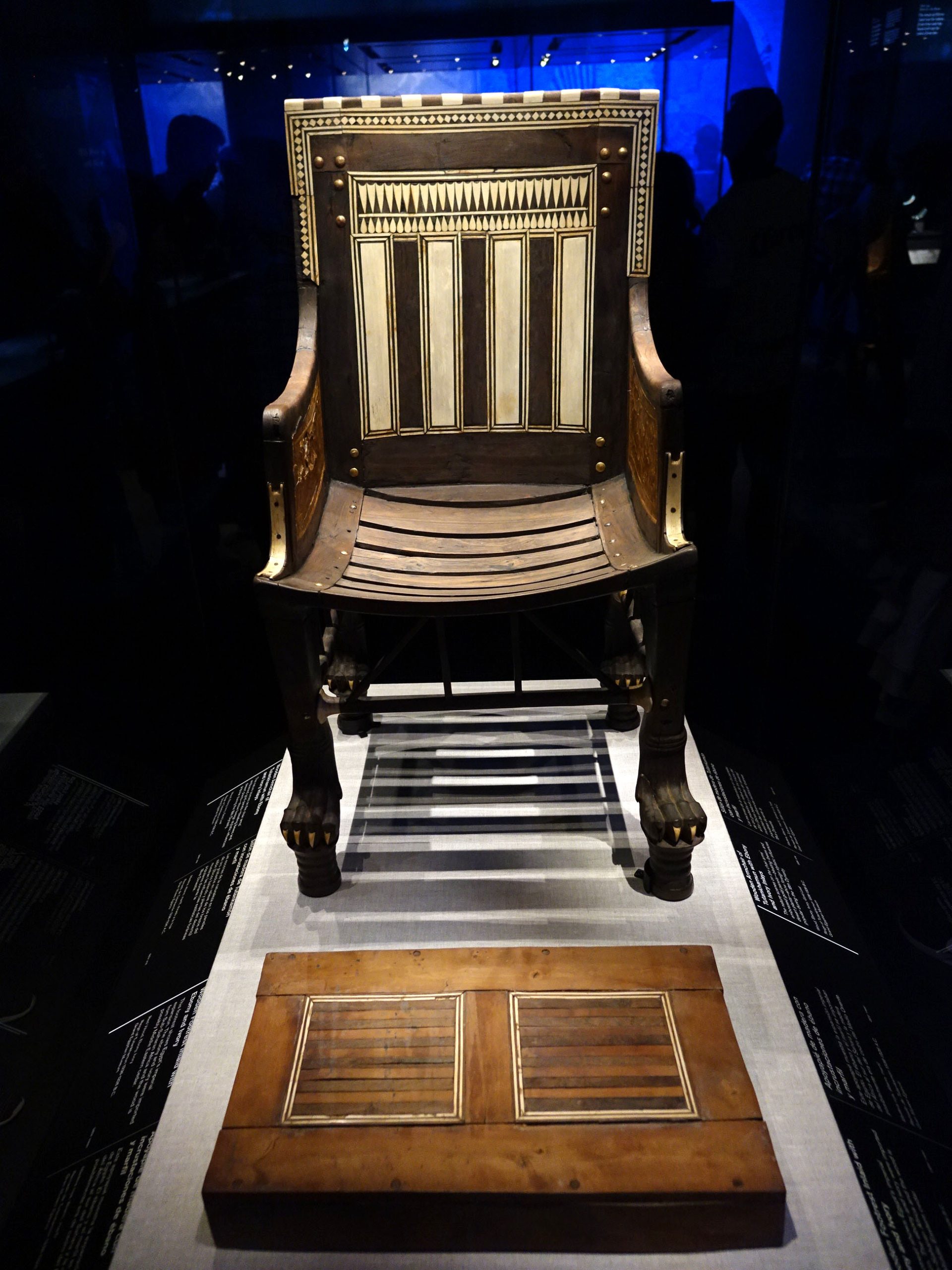
Note the many blue scarab beetles in this jewelry piece
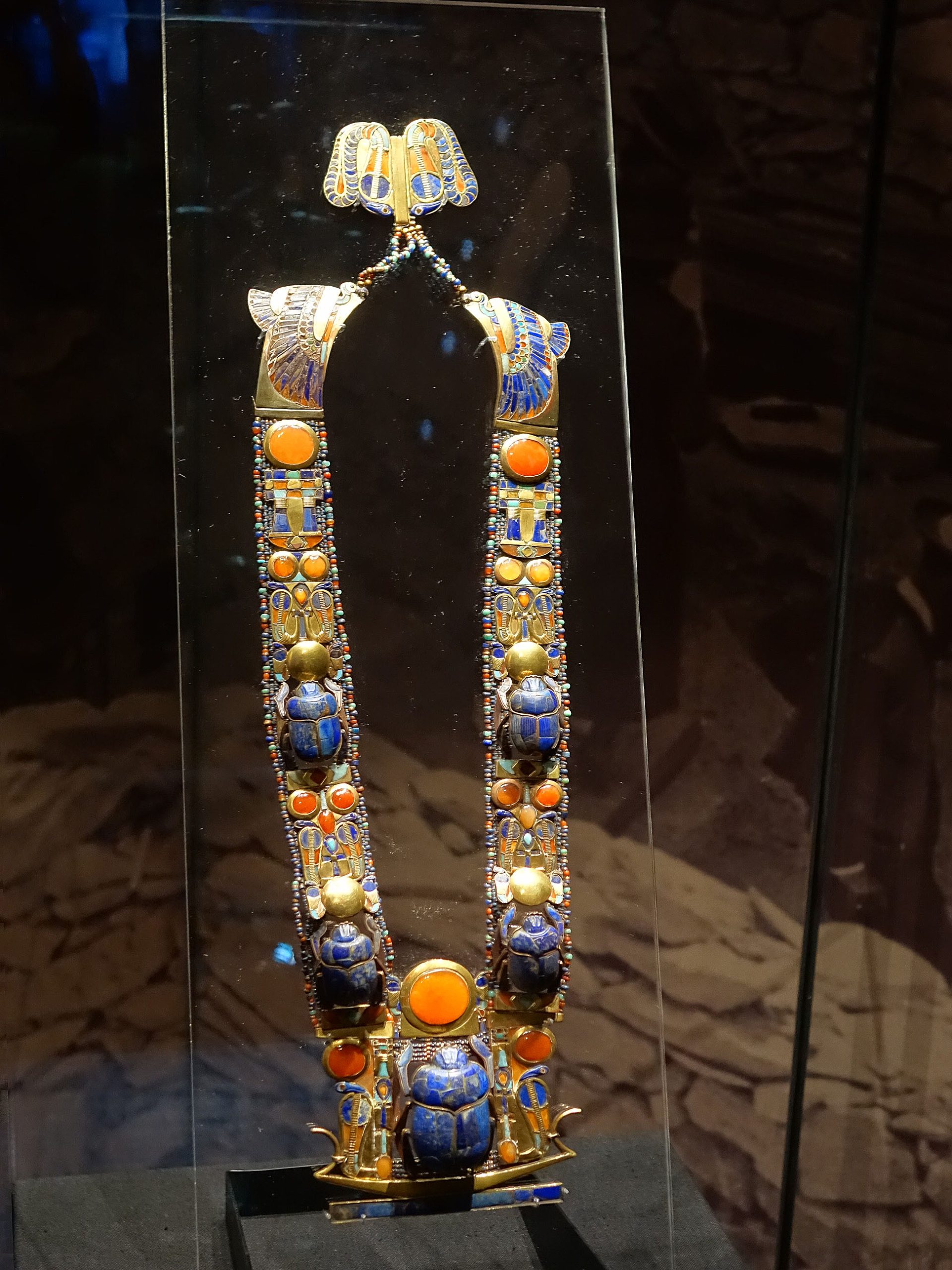
The scarab also appears in this magnificent artifact
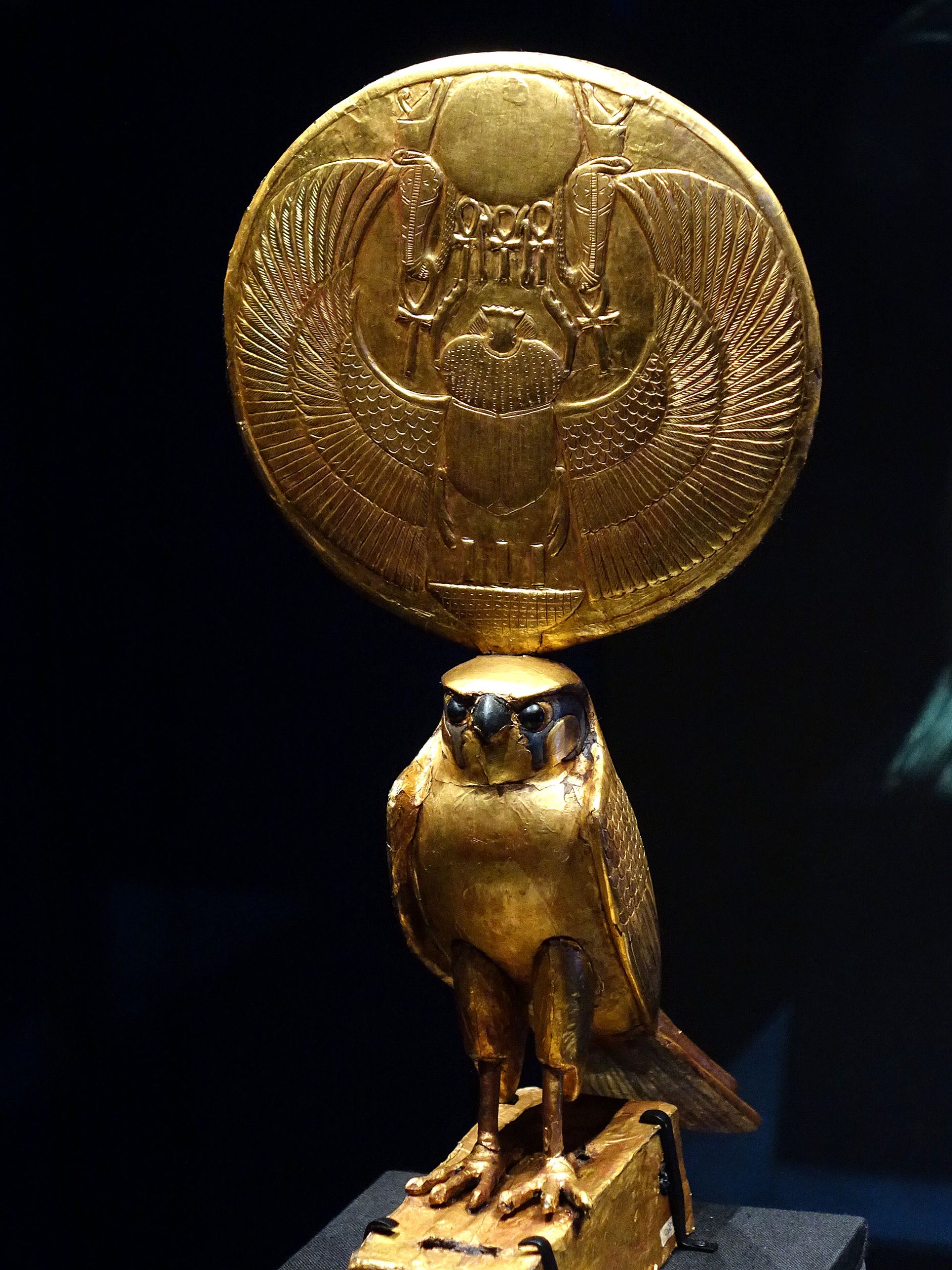
There were also numerous representations of the king buried with him in the tomb. Note this representation has him using a walking stick. He had a club foot and other disabilities, probably due to his
parents being brother and sister. As a result, walking would have been painful and difficult for the king.
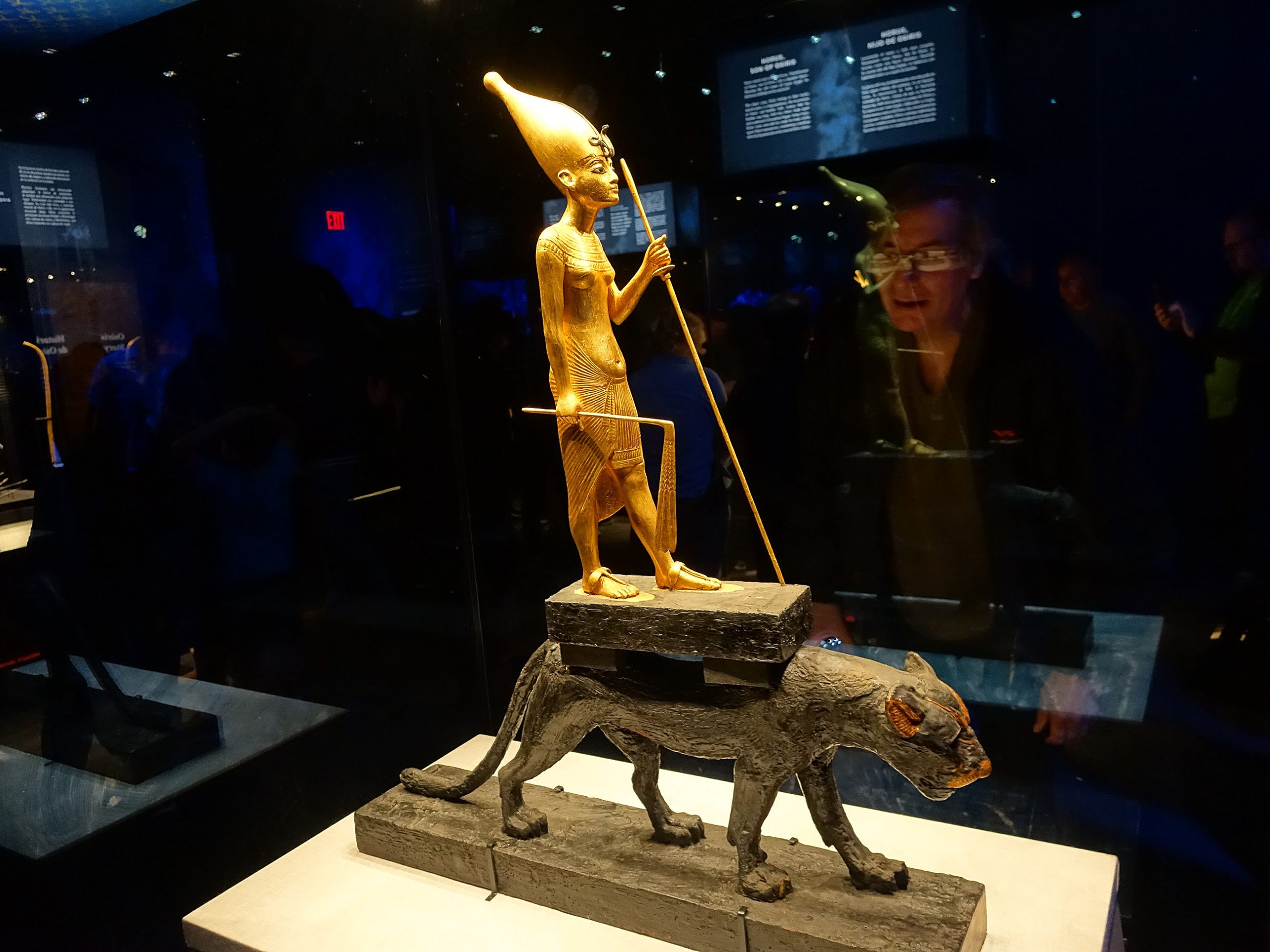
These representations were functional for holding the organs of the king as part of the mummification process. The beautiful calcite head was a stopper for this Canopic Jar.

King Tut was also a warrior and he was provided with a bow and arrow for the afterlife
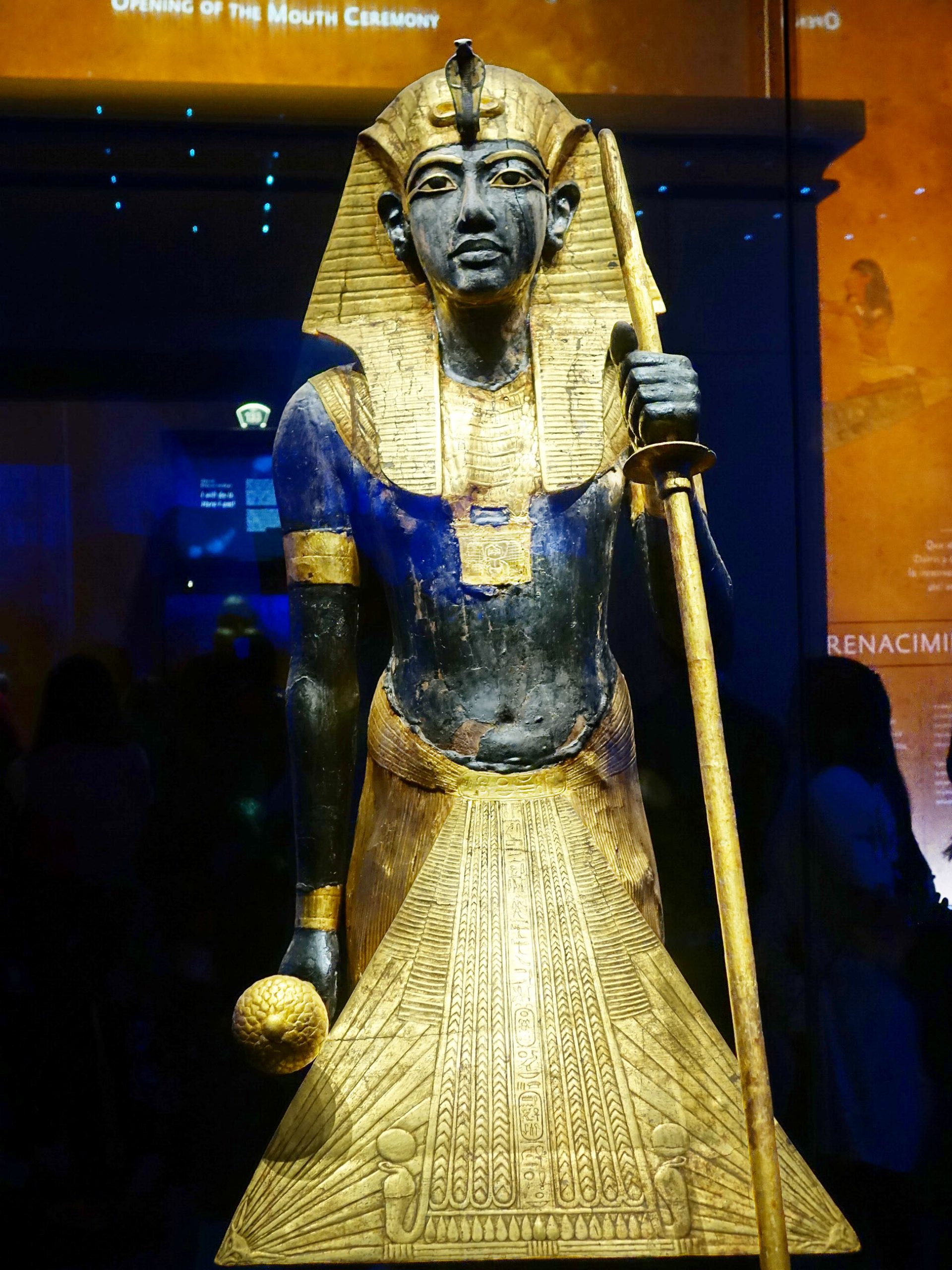
But the pinnacle of the exhibit was a representation of the mummy of King Tut laid out with the very best of the jewelry and accessories, all from his actual tomb.

The exhibit ended with a video showing how much King Tut entered modern culture, including fashion at the time of the discovery. And later with Steve Martin’s comedy song “King Tut”.
Again, here http://swt.org/events/kingtut2




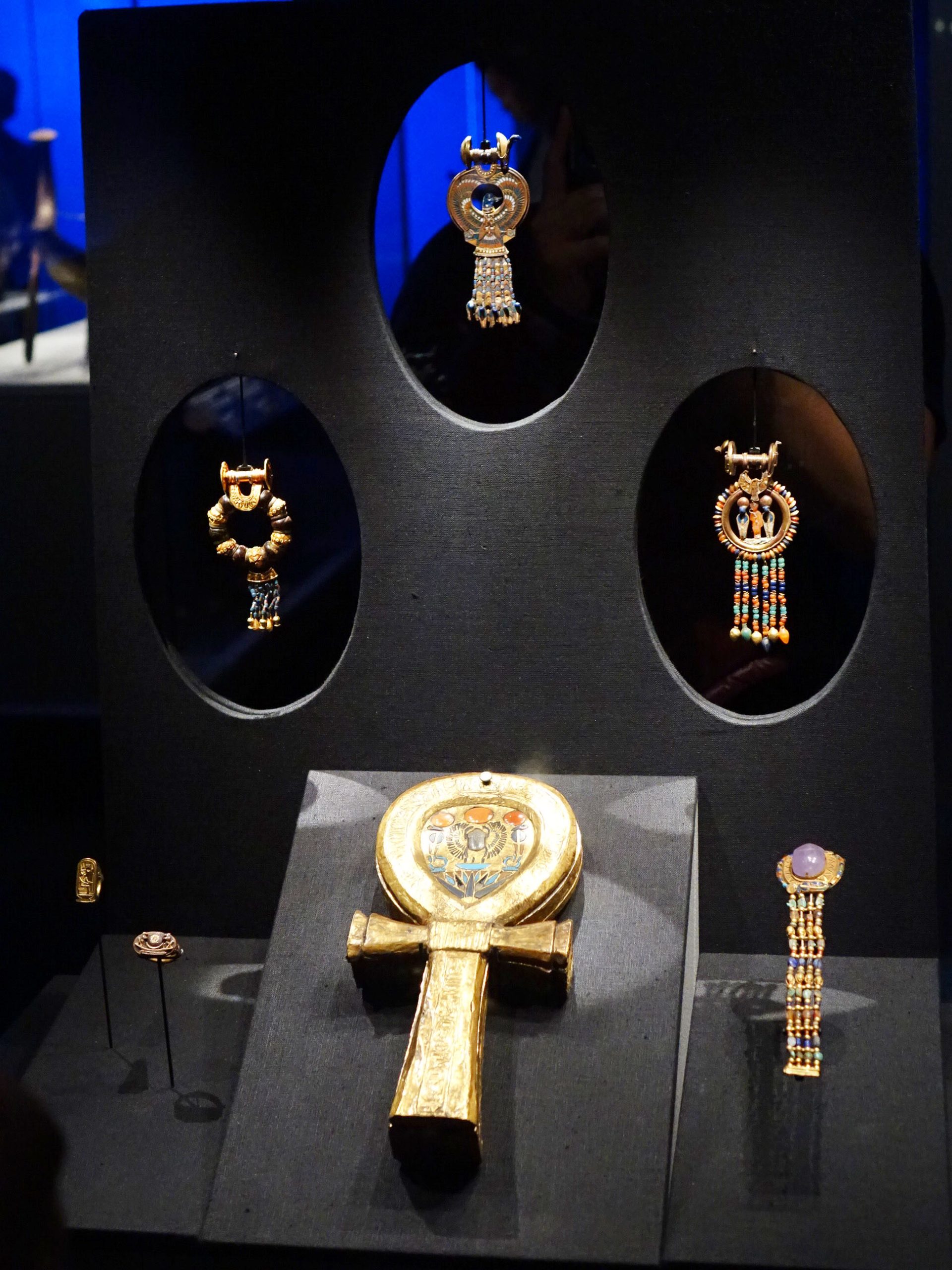
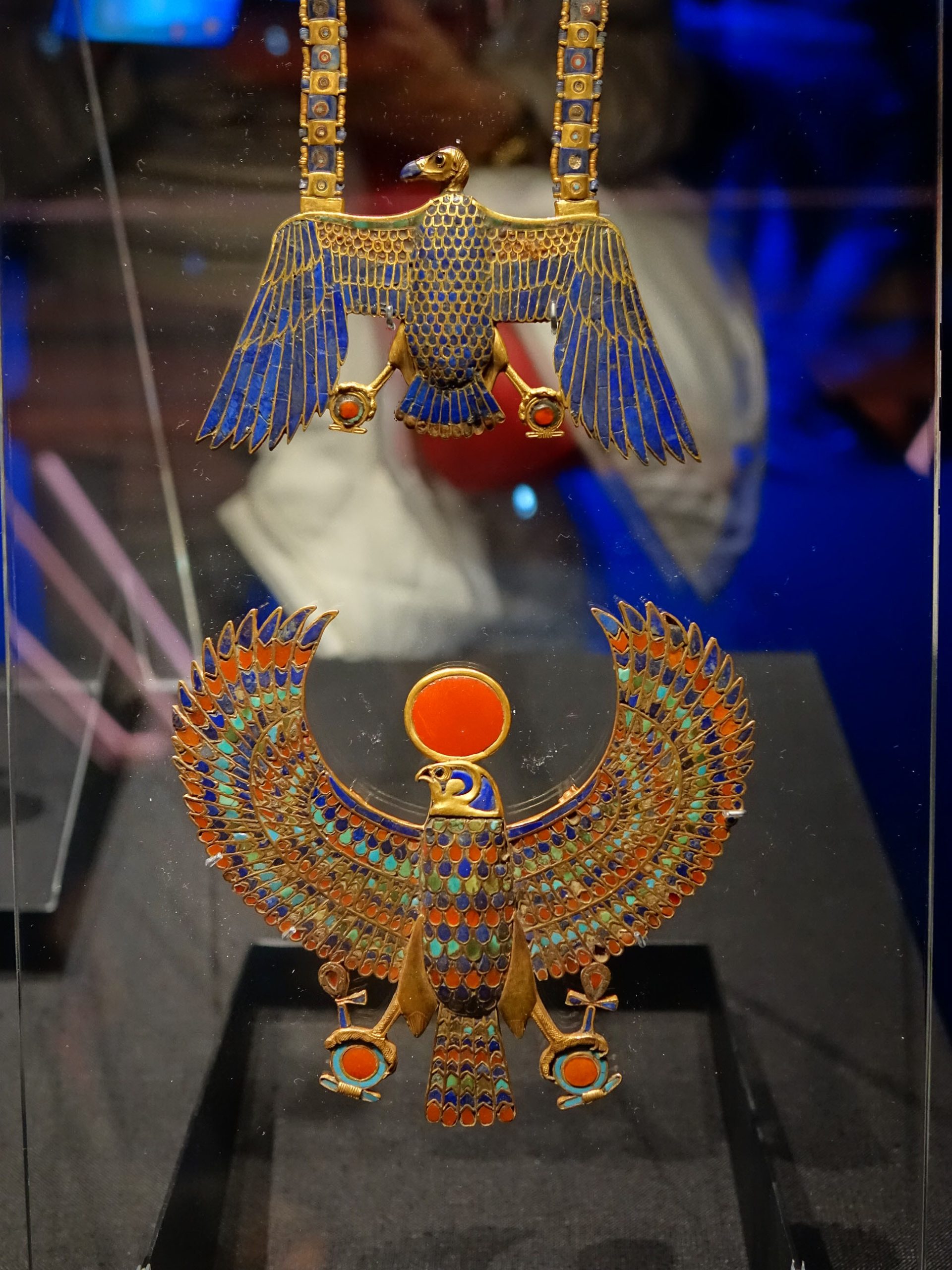
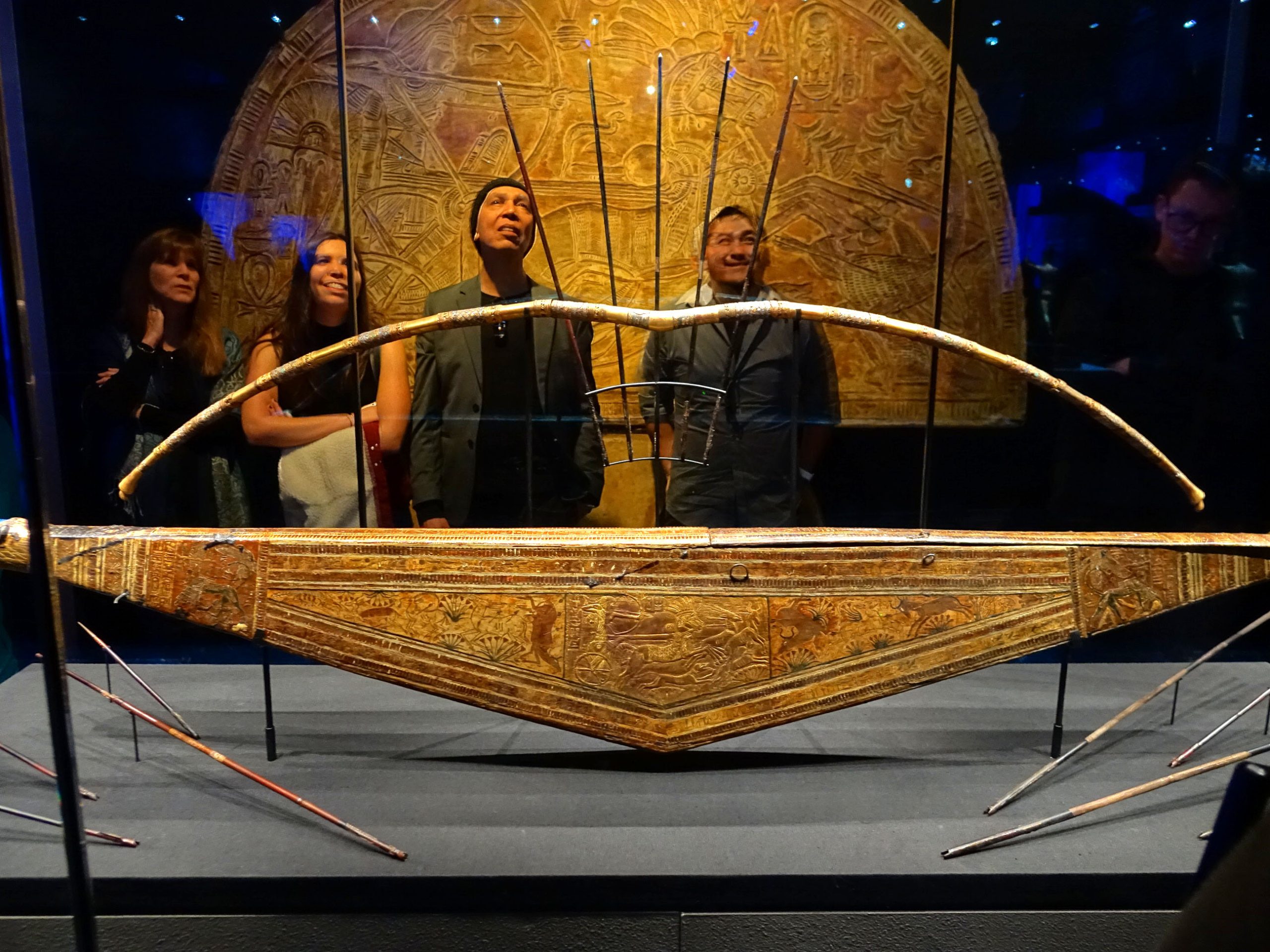
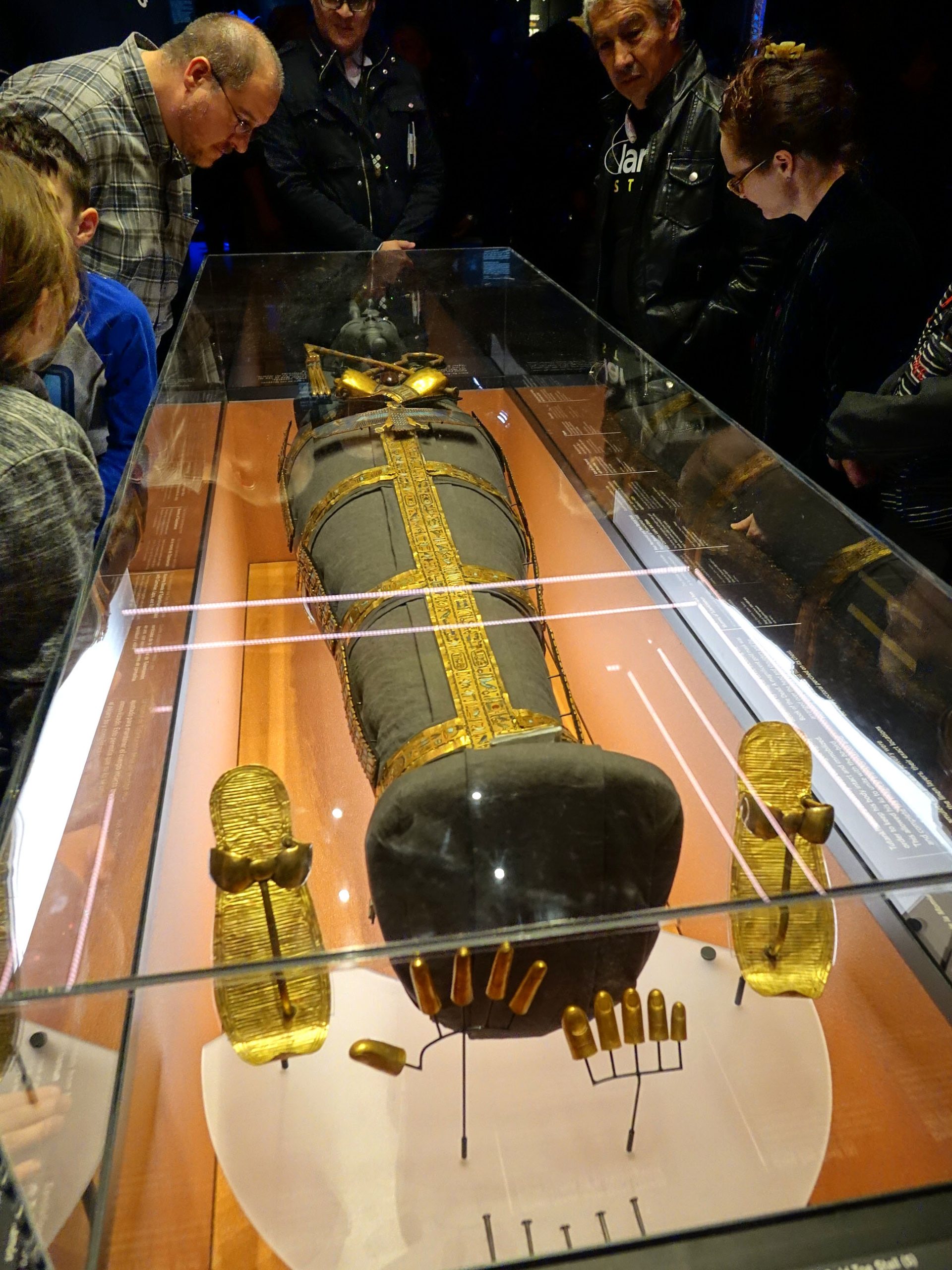

Wonderful photos, Robert, and your story line makes them even better. You sure lead an interesting life, thank you for sharing your journeys with us.
We went down to the Science Museum too, but didn’t plan well enough in advance to attend the Tut exhibit. What a zoo! That is a VERY crowded museum! If you go, be prepared to immerse yourself in citified life. Elbows up, people!
We went several months ago with the S B Airbus. It was great and not terribly crowded. Thanks for sharing your experience.
Thanks for writing that up Robert. Really interesting and excellent low-light photos. Your article reminded me of that British ITV mini-series “Tutankhamun” (available on Amazon, said to be not historically accurate but I thought it was fun).
Planned Parenthood has a program called “Choice Affairs.” One Choice Affairs trip 20 (?) years ago was via bus, with lunch and champagne included, to see the Tut Exhibit in L.A. What a fun trip. One of the exhibit guards took a liking to me and was giving me my own personal tour of the wonderful treasures. It was all so magnificent. I ran out of time and ended up running for the bus, which was (no kidding) already moving away from the curb. No one had checked to see if a passenger was missing. The driver acted quite put out with me. I still have my never-worn Tut shirt. Please go see the exhibit if you can. It’s extraordinary.
Wanted to chime in on how great Choice Affairs is.
SO glad you made it back on the bus! lol. (you’re either on the bus or off the bus…)
Choice Affairs, 44 pg. booklet; has description of each event. Scroll down to check them out:
http://choiceaffairs.ppcentralcoast.org/wp-content/uploads/2018/02/PP-CA18-Booklet-for-Meggan.F1.pdf
Thank you yet again, Robert. Wonderful report & photos! Saw it in early 80’s?
My favorite was Alexander the Great, saw that in SF.
Thanks & cheers!